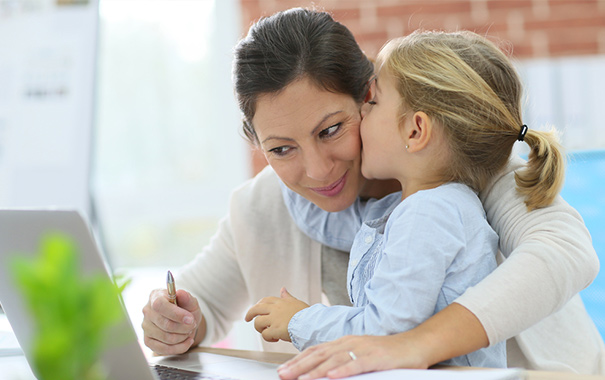
Understanding Parallel Play: A Key to Social Skills


When toddlers play side by side without talking or sharing toys, it might seem like they’re not interacting, but they’re actually practicing an essential social skill. This is called parallel play, and it’s a key part of how young children begin to connect with the world around them.
Between 18 months and 4 years, many toddlers naturally move through this stage as they learn to observe, copy, and feel comfortable around others, all while building the skills they’ll use later in more interactive play.
Quick facts about parallel play:
Understanding parallel play helps parents, educators, and caregivers support a child’s social growth. In the sections ahead, we’ll explore how parallel play works, its benefits, and how to encourage it effectively.
What Is Parallel Play?
Parallel play occurs when young children play side-by-side without directly interacting. They may use similar toys or mimic each other’s actions, but they stay focused on their activity—this is also known as playing alongside others.
So, what does parallel play mean? The definition of parallel play is considered an essential early stage of social development. Even without talking or sharing, toddlers are learning by observing their peers. You might notice this kind of side-by-side play at the playground, in daycare, or even at home when toddlers are simply near one another, each doing their own thing.
This stage may not look social at first glance, but it’s an essential step. Over time, parallel play helps children develop comfort around others, which supports later stages, such as associative and cooperative play.
Parallel Play Examples
During toddlerhood, imitation and pretend play are common and healthy parts of early development. One example of parallel play is when your child copies a playmate’s actions, such as stacking blocks, without directly engaging with them. Even though the children are near each other, they’re each focused on their own activity.
Keep in mind that sharing isn’t a concept that’s yet fully understood for them. For example, if there is only one truck and your toddler sees their playmate playing with it, they may decide to try to take it for themselves. This could lead to conflict, which you’ll need to help resolve, perhaps by offering your child another toy to play with instead.
These parallel play examples may seem simple, but they’re valuable stepping stones in learning how to play with others.
What Other Types of Play are There?
Although parallel play may seem like simple imitation or an independent activity, it helps your child build awareness of others, develop emotional regulation, and gain confidence. It often overlaps with other enriching types of play, each offering unique benefits:
Each of these types of play may occur alongside parallel play, supporting your child’s overall development as they move through the early stages of play.
When Does Parallel Play Start?
If you’re wondering when babies start parallel play, the age is generally around 18 months or 2 years old. At this stage, toddlers become increasingly aware of other children and often begin to play side-by-side, using similar toys or mimicking actions, without direct interaction.
This kind of parallel play is a healthy and expected part of your child’s social development. It often appears during play with toys or outdoor activities, anytime your toddler is in a shared space with other children but is focused on their own play.
When Does Parallel Play End?
There isn’t an exact age when parallel play ends, but it often begins to fade at the time your child is ready for preschool, typically between 3 and 4 years old. As children gain confidence and communication skills, you may start seeing them share toys, respond to others, or engage in simple group games—signs they’re moving toward more social forms of play.
Every child develops at their own pace. Some may stay in the parallel play stage longer, and that’s perfectly okay. The important thing is that your child feels safe, curious, and supported as they explore how to play with each other in their own time.
When Do Kids Start Playing Together?
Children usually begin to play together around preschool age, when their communication and cooperation skills become more developed. This is when shared goals, turn-taking, and imagination start to shape their play.
What comes after parallel play is often more interactive, like pretending together or playing games that involve basic teamwork. These early social experiences help children build emotional intelligence, language, and empathy.
While some toddlers make this transition earlier, others may take more time, and that’s perfectly normal.
Benefits of Parallel Play
Even though it may seem unusual to see your child playing independently next to another child instead of with them, it doesn’t mean anything is wrong. Parallel play is a healthy and necessary part of development—it teaches children how to interact with others while remaining focused on their own activity.
This stage encourages social awareness and provides natural chances to learn by observing peers. For example, a child building with blocks might watch another construct a tower and be inspired to try it themselves, all without saying a word.
Over time, this kind of side-by-side play helps lay the groundwork for future social interaction, communication, and collaboration.
As your child matures, parallel play often transitions into more interactive play where imagination, teamwork, and conversation take the lead. All of these forms of play are important, and together, they support your child’s overall development.
How to Encourage Parallel Play?
Parallel play doesn’t require structured activities—it naturally happens when toddlers have the space and support to explore around others. Still, there are simple, practical ways you can encourage this stage:
Through simple activities like these, your toddler can build comfort playing near others, gaining the confidence and curiosity needed for more social play later on.
FAQS AT A GLANCE
Parallel play is when toddlers play near one another but don’t interact directly. It’s an early stage of social development where children observe, mimic, and explore while staying focused on their activities.
The Bottom Line
Parallel play is a natural and important part of your toddler’s development. Even if they aren’t interacting with others just yet, playing near them helps build the social skills they’ll use later.
Providing your child with opportunities to play alongside peers—at home, on playdates, or at the park—helps them develop confidence, curiosity, and essential social skills. These moments of side-by-side play are often the quiet beginnings of future friendships.
And when they’re ready, you’ll see it: shared laughter, first games, and maybe even a tower built together.
If you’re looking for some fun activities for your toddler, check out our dedicated articles with plenty of inspiring ideas, including arts and crafts for toddlers, physical activities, and activities you can do at home.
While you’re here, download the Pampers Rewards App for rewards and discounts on your Pampers purchases.
- HealthyChildren.org. "3 Ways Your Child Builds Important Life Skills Through Play."
- HealthyChildren.org. "Developmental Milestones: 2-Year-Olds."
- HealthyChildren.org. "Social Development: 1-Year-Olds."
- HealthyChildren.org. "The Power of Play: How Fun and Games Help Children Thrive."
- KidsHealth.org. "Learning Newborn Cues."
- NCBI. "Child Development."
- NCBI. "Socialization."
- Zero to Three. "From Baby to Big Kid: Month 17."
- Zero to Three. "Stages of Play From 24–36 Months: The World of Imagination."
- Zero to Three. "Tips on Helping Your Child Learn to Cooperate."
Read more about Toddler
Related Articles
Join a World of Support
through Pregnancy and Parenthood.
TRACK WITH TOOLS
LEARN WITH EXPERTS
GET REWARDED







